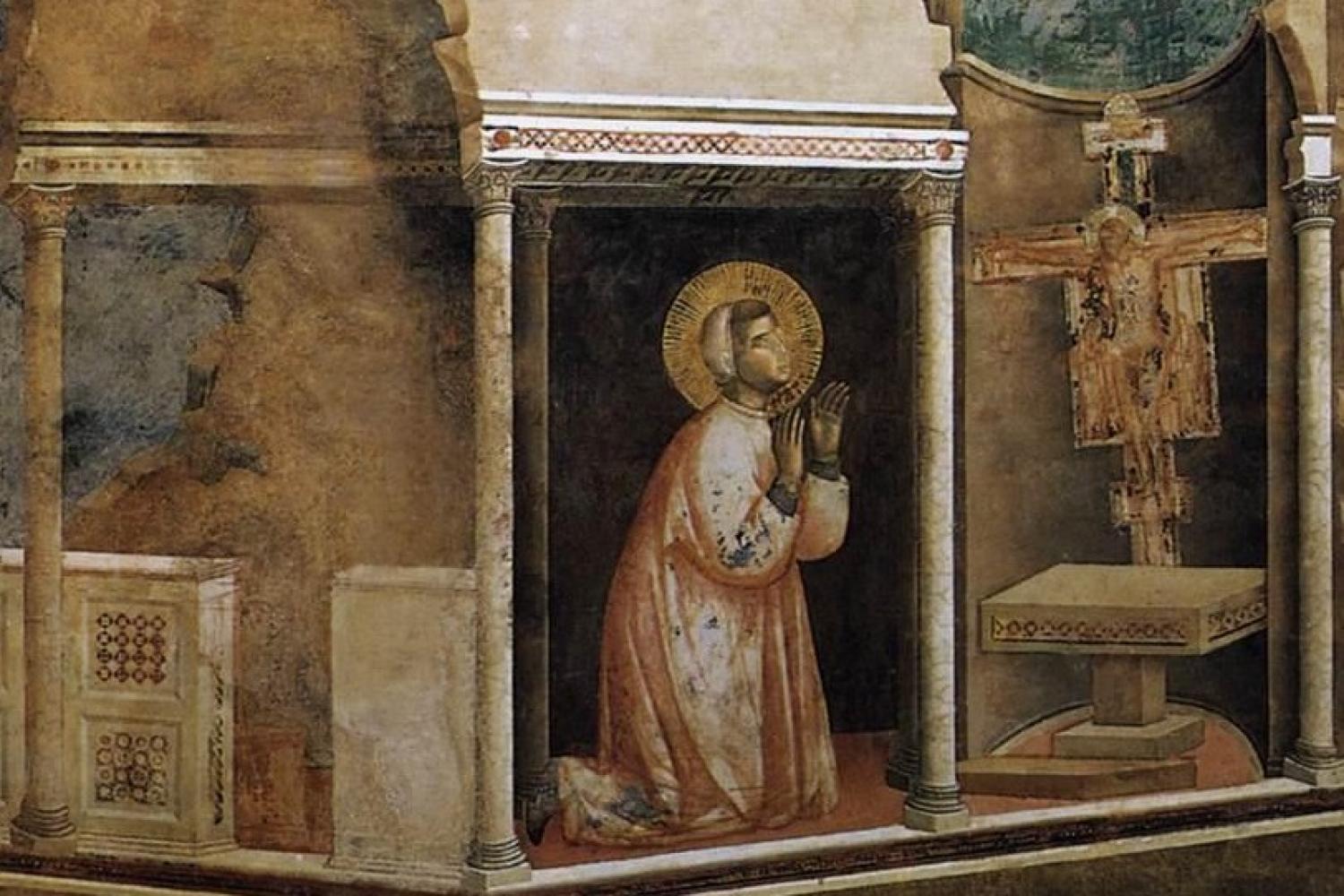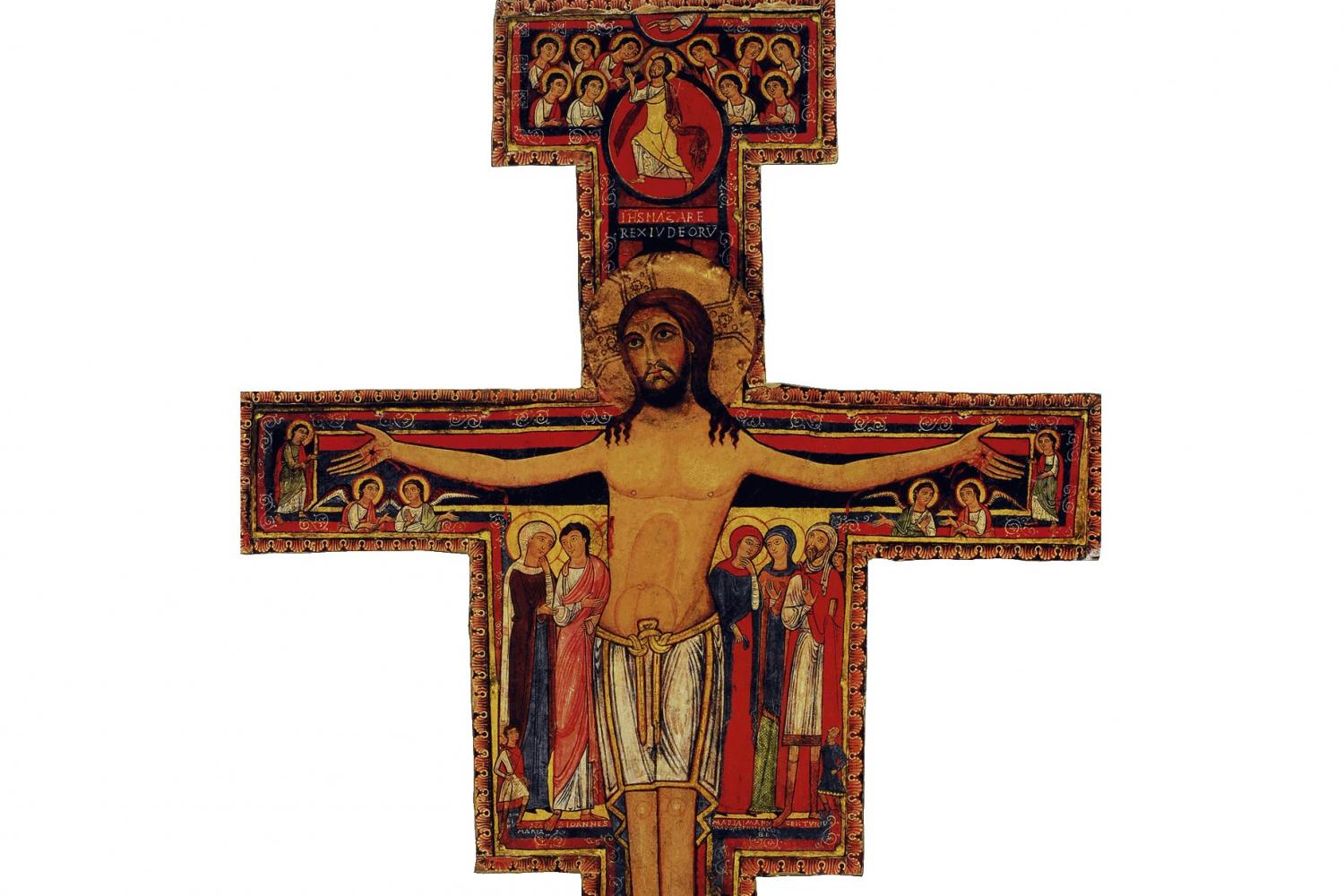
Giotto di Bondone, one of the most important figures in the history of Italian art, is known for the realism he brought to his paintings. Ushering in the end of the dominance of the relatively flat and standardized figures of the Byzantine style, Giotto depicted people full of realistic emotion and arranged them as if in three dimensions. (Giotto's unique approach to painting was discussed in a similar article on his "Nativity" in Assisi.)
Many of Giotto's most famous frescoes depict the life of Christ (he produced a famous series in the Scrovegni Chapel in Padua) and the life of St. Francis of Assisi. Giotto's works and influence can be found throughout the stunning frescoes of the Basilica of Saint Francis of Assisi built over Francis's tomb.
In a simple fresco found in the upper church of the Basilica of Saint Francis of Assisi, Giotto depicts a scene of profound vocational call from early in Francis's life. Alone in the countryside near Assisi, Francis entered the old chapel of San Damiano, which was falling into ruins. Suddenly, as he knelt in silent prayer before the crucifix, he experienced a deep sense of consolation and heard a voice say to him, "Francis, go and repair my church, which as you see is falling into ruins!" Realizing that he was alone, Francis took the call as being from God and committed himself to rebuilding the chapel. Only later would Francis recognize that God had called him not simply to restore the chapel of San Damiano (which he did), but to restore the Church itself. (Click here to view the full fresco.)
Giotto's fresco recreates the scene simply. Nothing save the halo around Francis speaks to the supernatural quality of the moment. Giotto allows the viewer to witness the intimate scene with the aid of broken segments of roof and wall. Francis, alone and in the dark, prays before the cross. Francis, alone and in the dark, hears the voice of God.
The crucifix before which St. Francis had been praying (famously known as the San Damiano Cross) is believed to have been painted in the twelfth century. The artist remains unknown. The crucifix includes numerous figures around Jesus. For instance, above the head of the crucified Christ can be seen the hand of the Father reaching down from heaven and an image of Christ himself resurrected and ascending into heaven among the angels. Angels can be found below Christ's hands and saints stand below his body, discussing the events they are witnessing. While this cross has been recreated countless times and a replica can be found in the location of Francis's call, the original hangs in the Basilica of Santa Chiara in Assisi.
Giotto's "Miracle of the Crucifix" reminds viewers of the willingness with which Francis responded to the voice of God in his life. Rather than doubting, Francis responded to the voice he heard instructing him to rebuild the Church, only recognizing the profundity and scope of those words over time. The unfolding of Francis's call from the crucifix and the restorative impact his pursuit of the Gospel had on the Church show forth the transformative element of vocation, articulated by Dr. Don Briel: "So often, out of good will, we wonder 'what am I called to do?' But then we become concerned about a work. What in fact God is inviting us to is a transformation of life and its purpose, not simply a work to be done."

The First Draught
To receive the Weekly Update in your inbox every week, along with our weekly Lectio Brevis providing insights into upcoming Mass readings, subscribe to The First Draught.
